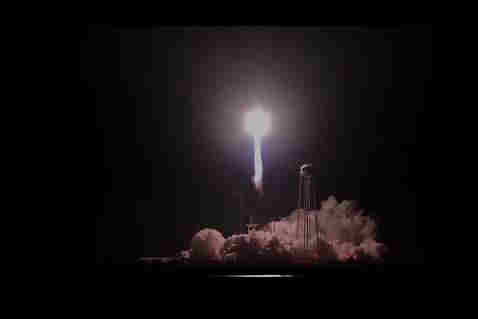OCT2 module heads to space station
Heidelberg Engineering says its next-generation SPECTRALIS OCT2 module is headed for the International Space Station (ISS).
NASA launched the module aboard its Antares 230 Cygnus CRS OA-9, also known as Orbital Sciences CRS Flight 9E from Virginia on May 21.The device will be installed on the ISS in late 2018.
“The SPECTRALIS with OCT2 Module uses patented TruTrack active eye tracking,” said Ali Tafreshi, Director of clinical research for Heidelberg Engineering. “The technology uses a second laser beam to actively track the eye during OCT scanning to effectively ‘freeze’ the retina and avoid motion artifacts. With this technology, a precise OCT image can be captured, even if the subject blinks or moves.”
NASA’s researchers have used the SPECTRALIS OCT to investigate the effects of a microgravity environment on vision since 2013. While the existing device continues to function normally on the ISS, a next-generation SPECTRALIS with OCT2 Module will optimize acquisition speed and capture more complex scans, while considering use of additional modalities such as OCT angiography, anterior segment imaging, ultra-widefield fundus imaging and MultiColor.
“Upgrading to the OCT2 Module allows NASA to gain greater understanding of space flight associated neuro-ocular syndrome (SANS), a condition astronauts commonly experience as a result of space flights,” said Dr Alex Huang, Assistant Professor, Department of Ophthalmology, David Geffen School of Medicine, University of California, Los Angeles. “SANS can cause unilateral and bilateral optic disc edema. In association with the edema, globe flattening, choroidal and retinal folds, refractive error shifts, and nerve fiber layer infarcts have also been noted. This research is expanding the exploration of ocular pathology in space and on Earth.”
“The SPECTRALIS OCT2 module will allow us to image deeper structures in the eye that are affected by long-term space flight such as the posterior optic nerve head anatomy and the choroidal blood supply to the retina.” said Dr David Brown, the retina specialist on the NASA SANS Research & Clinical Advisory Panel and a retinal surgeon at Houston Methodist Hospital in Texas.
“Understanding changes in these structures will be critical for future long-term missions to Mars and have applicability to terrestrial research on both retina disease and glaucoma.”



























